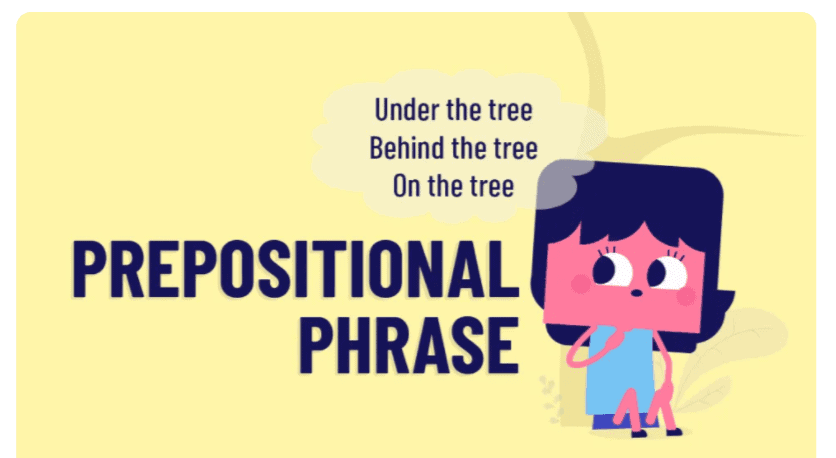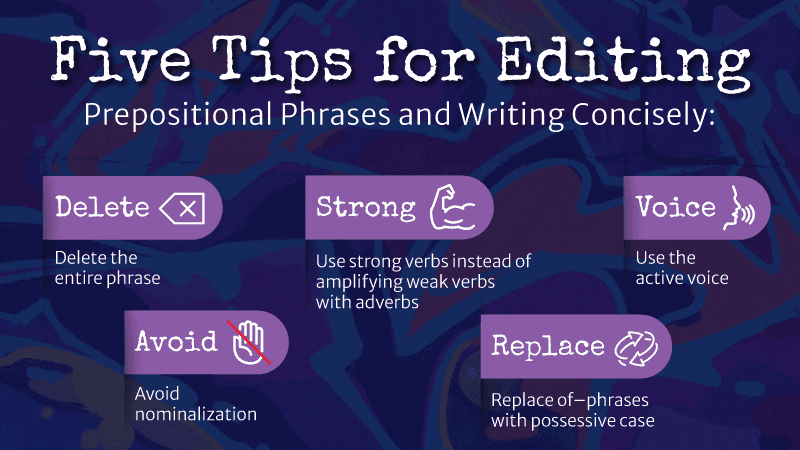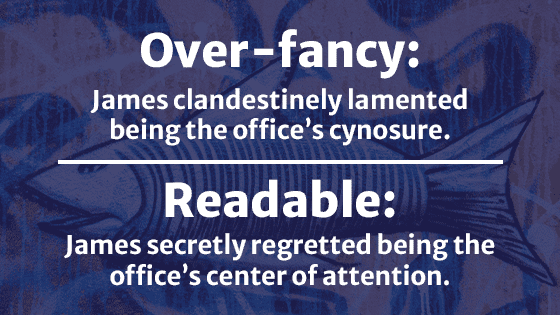Your readers crave clarity. They always think, “What’s in it for me?”
Good copy is clear. If you ramble, you bore your readers and erode their trust. You need to write concisely and answer your audience’s pressing questions without making them wait.
Every sentence links your headline to your conclusion. And every fluffy word stretches that conversion process without adding value and increases the risk of losing a customer.
You can’t afford to have unnecessary words in your content, whether you want a product description, landing page, or an evergreen article.
Read on to learn how to write concisely and cut the fluff from your articles.
Fluff means unnecessary details that drag out your content without adding any value to the reader.
Examples include:
- Writer’s opinion (I think, I believe, or personally)
- Flowery text or fancy words (using deleterious instead of harmful)
- Extra words (adverbs — like very and ultimately)
- Zombie nouns (calibration, repeatability, or indication)
- Wordy prepositional phrases (the survey of 500 students was conducted by the team instead of the team surveyed 500 students)
Fluff contains no valuable information, and you can remove it without affecting your content.
Here’s an example of a fluffy text and how you can write concisely:
Fluff: There’s nothing like driving a truck and enjoying what the off-road adventure has to offer. But you couldn’t have done it without the right bumpers. Buying the right bumper for your truck can make or break your off-road experience — so make sure you make the right choice!
Meaningful content: Buying the right bumper for your truck can elevate your off-road trips. Browse our unique bumper designs today.
Pro tip: Modern readers like instant gratification. Go straight to the point and give them what they want without beating around the bush.
How Fluff Can Weigh Down Your Article
When you write more than what’s necessary for your article, you waste your reader’s time. Your website suffers from fewer click-throughs, high bounce rates, and lower Google rankings.
Fluff drowns out your article's actual message and purpose, pushing a reader away. That harms your content marketing efforts as readers may leave without converting.
The Blogsmith Tweet
How To Write Concisely
- Eliminate redundant pairs and filler words
- Write in the active voice
- Identify and reduce prepositional phrases
- Avoid repetition
- Avoid stating the obvious
- Choose simple words over fancy words
Here are six ways to write concisely to help you cut the fluff and make every word count.
Redundant pairs are words in English that are used together but have roughly the same meaning. They are often used together in speech for emphasis and get a free boarding pass for written text.
Examples of redundant pairs include:
- First and foremost
- Each and every
- Unexpected surprise
- Final outcome
- Terrible tragedy
To shorten a wordy sentence, replace the redundant phrases with single words.
For example, here’s a sentence with redundant words: For each and every smartphone you buy, you will receive free earphones.
Here’s how to write it concisely: For every smartphone you buy, you’ll receive free earphones.
You can also trim redundancy on words categorizing people and things. Shorten phrases such as unusual in nature, heavy in weight, and at an early time to unusual, heavy, and early.
Don’t use two or three words to say something you can say in one word. This makes the text easier for readers.
On the other hand, filler content is any text that increases the word count without adding any value. It involves unnecessary phrases, irrelevant ideas, and the use of long and complex sentences.
Here’s an example of filler content and how to write it concisely:

Pro tip: Avoid filler words such as in order to, just, and absolutely.
2. Write in the Active Voice

Use active voice if you want to write in a strong, direct, and clear tone.
In an active voice sentence, a subject performs an action (verb), and you can visualize the action.
On the other hand, a passive voice sentence has a subject that is acted upon by a verb.
For example:

The active voice is clear, direct, and easy to read. The passive voice is also grammatically correct, but it lacks the energy and clarity of the active voice. Its structure can feel unnatural and clumsy, making your text more challenging to read.
Passive voice also uses more words than active voice.
How do you identify the passive voice?
If a phrase contains a to-be verb such as has been, was, or will be, it’s in the passive voice.
You can convert most passive sentences into active sentences by rearranging words and removing unnecessary words.
For example:
Passive sentence: The baby was carried in the car by Jane.
Construction: [Subject that received an action] + [to-be verb] + [action] + [extra information] + [prepositional phrase with actual performer of the action]
You can rearrange the construction by shifting the actual performer to the beginning of the sentence, followed by action, object (that received an action), and the rest of the information:
Active sentence: Jane carried the baby in the car.
The sentence is now more clear and more concise.
This doesn’t mean that you should never use passive voice.
A passive voice construction comes to aid whenever the actor of an action is irrelevant or unknown, and the action deserves readers’ attention.
For example:
- Two people were shot dead.
- The law will be passed after the debate.
- Mistakes were made.
The last example highlights another use case of passive voice: It helps you acknowledge a mistake without accusing anybody.
To learn more about style and grammar rules you can break when writing for the web, check out our book: Writing for Humans and Robots: The New Rules of Content Style.
3. Identify and Reduce Prepositional Phrases

Prepositions are words that indicate how nouns, pronouns, and verbs relate.
For example:
- In
- For
- With
- To
- Beneath
Prepositions are often essential in a sentence, but you may clutter your writing by overusing them.
For example, you can say, “The proposal for auctioning is under review by the management.” Or you can write it as, “The management is reviewing the auctioning proposal.”
The first sentence uses prepositional phrases. By removing those, the second sentence reduces the word count and simplifies the reading experience.
Here are five tips for editing prepositional phrases and writing concisely:

1. Delete the entire phrase: Prepositional phrases can sometimes create redundancy. In such cases, remove the whole phrase.
For example:
Instead of: Benson wanted to make a good first impression on his boss and colleagues at his new job.
Say: Benson wanted to make a good first impression at his new job.
2. Avoid nominalization: Nominalization occurs when you transform a verb or adjective into a noun. It takes the life out of the verb or adjective and makes the sentence wordy.
For example:
Instead of: He’ll put your offer under consideration.
Say: He’ll consider your offer.
3. Use strong verbs instead of amplifying weak verbs with adverbs: Replace the prepositional (adverbial) phrase with a precise verb.
For example:
Instead of: Daisy shook with great force.
Say: Daisy trembled.
4. Replace of–phrases with possessive case: We use possessive case to show belonging.
For example:
Instead of: The aunt of the child walked away.
Say: The child’s aunt walked away.
5. Use the active voice: You can also use the active voice to trim prepositional phrases.
For example:
Instead of: My TV was stolen by a thief.
Say: A thief stole my TV.
4. Avoid Repetition

You may repeat words unknowingly.
You are especially prone to it in search engine optimized (SEO) writing, where you focus on a couple of keywords.
Besides that, you may habitually overuse certain words or phrases. Unlike you, your readers may detect the overuse of those words and lose interest in reading further.
Repetition isn’t limited to words. You may also use the same sentence structure and limit yourself to monotone prose — which is boring and painful.
For example:
Jane said she’d see the doctor. Jane then decided to stay home for another week.
To avoid this kind of repetition, vary your sentences’ length, rhythm, and syntax to make them more dynamic and attractive to your readers.
For the example above, you can write it concisely as: Jane said she’d see the doctor but then decided to stay home for another week.
You can also use a thesaurus to replace your frequently used words with synonyms.
5. Avoid Stating the Obvious
Stating the obvious will earn you a “well duh” response, which isn’t good.
For example, an article on Easter that opens with, “Many Christians enjoy Easter all over the world” deserves a “well duh” response.

Other times, you may be too specific when not required.
Look at the following sentence:
I got the message that you sent to me yesterday regarding the impending construction of my house. But in the message, you failed to include the time you plan to arrive at my home. Could you, at some point in the next few weeks, give me the details of what time I should be expecting the construction workers?
You can reduce this to:
I got your message about the construction of my house, but you didn’t say what time the workers will arrive. Please, let me know soon.
The sentence is more concise and sounds professional.
This editing takes practice, but it significantly improves your writing.
6. Choose Simple Words Over Fancy Words

Choose commonly used words over the unusual when making word choices. Simple words take little space and are more clear and more concise, helping you remove clutter from your writing.
Jargon is usually useless since online readers want to skim and easily understand your content.
Instead of proximity, go for near. Favor use instead of utilize, and so on.
Let’s look at an example.

The ‘smart-sounding’ sentence might be concise, but it’s unreadable.
Grammarly can often help you with this. It recommends that you replace long words with simple ones.
Final Thoughts: The Blogsmith’s No-BS Guide on How To Write Concisely
There you have it — six ways to help you cut the fluff and write concisely.
However, these writing tips only work if you incorporate them into your work process.
Concise writing is hard. So make it a part of your editing process to always spot and remove fluff from your writing.
The Blogsmith takes concise writing for our clients seriously. We do charge by the word, but we don’t believe in fluff or words just for words’ sake. And we usually cut a lot of words during edits.

We continuously provide value with our pieces for clients and readers by using data-driven tools like Clearscope to define word count — not arbitrary suggestions to make more money.
If you want a company that can give you concisely written pieces along with outstanding value, get in touch today.














